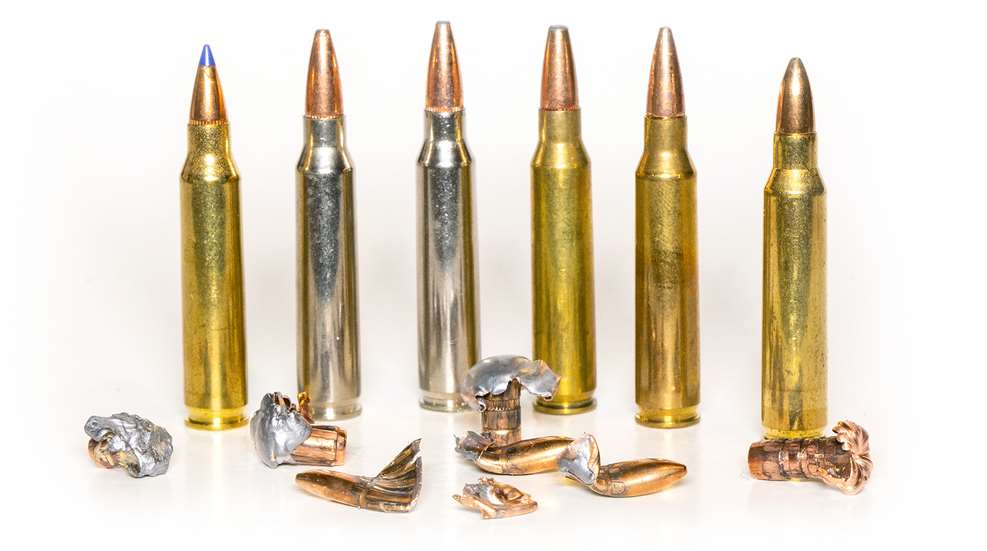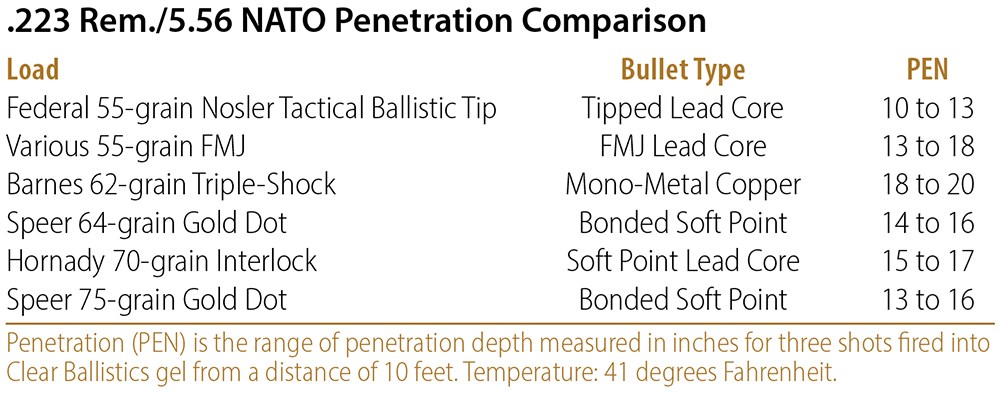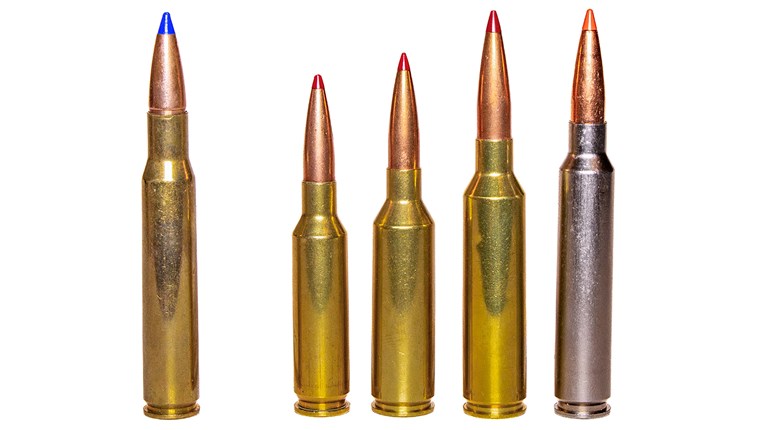
While all of these .223 Rem. projectiles are different in appearance, intended usage and end result, in practical applications each will get the job done.
During a recent trial, the prosecution questioned the defendant about the ammunition loaded in his AR-15. This produced a comment from the defendant where he stated, “…a bullet is a bullet.” If you were watching, you probably immediately disagreed, as did the prosecutor. If you’re a frequent reader of this magazine, particularly this column, you know that variances in the terminal performance of different bullets can be extreme. You’re also probably of the opinion that if you have a firearm for personal protection, the type of ammunition you load it with is critical.
In fact, in this very issue you’ll find the details of a test I conducted with ammunition for carbines—AR-15s, specifically—that deals with the terminal performance and over-penetration of different loads/bullets. During the trial, the prosecutor attempted to make a similar distinction between hollowpoint and FMJ bullets, suggesting hollowpoints, “… explode inside the body.” Surprisingly, the judge stepped in, providing some clarification and an unexpected bit of firearm knowledge from the bench.
The first point I want to make is that if you must shoot a human being in an act of self-defense that results in an arrest and charges being filed against you, you can expect the ammunition you used to be a topic of discussion at the trial. This has been proven countless times. My second point of interest deals with the defendant’s notion that, “… a bullet is a bullet.” As uneducated as this notion seems, in very general terms—and given the firearm the defendant used against his attackers—it is a plausible assumption. If you must shoot an attacker with an AR-15, it’s more important for the bullet to hit the attacker than what type of bullet you fire.
Why? There are several reasons. The first is that an AR-15 chambered for .223 Rem./5.56 NATO is a powerful defensive tool. Some might find this counter to conventional wisdom because compared with, say, something like the .30-’06 Sprg., the .223 Rem. cartridge produces only about a third of the kinetic energy, so calling it a “high-power rifle” (whatever that means) is misleading. But, the terminal effect of a bullet impacting anywhere close to 2,700 fps, can be devastating; it will deliver massive amounts of tissue damage. As recent events proved, it can also be lethal.
Secondly, full-metal-jacket ammunition is generally regarded as the least appropriate carbine ammunition for personal protection. This is partly because if an FMJ bullet avoids its tendency to tumble, it can over-penetrate. It’s also partly because of its lack of ability to deform from nose to base during penetration, thus creating lengthy and large wound cavities. However, in the case of the aforementioned shootings, FMJ ammunition proved to be exceptionally reliable at stopping the threats. This, of course, is all that can be asked of any bullet fired from any firearm in a self-defense situation.
And finally, with most conventional loads for the .223 Rem., whether they be designed for fragmentation or more controlled expansion, bullets are, well, bullets. Most any bullet commonly loaded in .223 Rem. ammunition is going to penetrate to a depth of between about 10 and 20 inches. Penetration to these depths falls almost perfectly within the FBI’s ideal penetration depth of 12 to 18 inches for duty ammunition. Will some bullet designs damage more tissue and create more hemorrhaging? For sure. Are these differences enough to matter? Maybe, but most likely not.
This may seem hard to believe. And, if it is the case, why are there so many .223 Rem./5.56 NATO loads from which to choose? One major online retailer lists more than 150 loads with options ideally adapted for everything, including target practice, competition, varmints, big-game hunting and yes, self-defense. But, look at the comparison of the six loads in the accompanying chart. These loads/bullets vary in penetration depth, which is the most critical aspect of terminal performance, but all loads fell within the desirable depth for personal protection.
Granted, these different bullet styles will create wound cavities of varying lengths and widths. These bullets also have different potentials when it comes to defeating intermediate barriers like auto glass, walls and metal. However, given a real-world shooting situation, all are going to penetrate to a depth deemed appropriate for self-defense. With the lone exception of the fragmenting 55-grain Tactical Ballistic Tip, it would be unlikely anyone other than an experienced forensic pathologist could match the bullets to the wounds.
With regard to the FMJ load, its description sounds more ominous than reality. A FMJ bullet consists of nothing more than a thin, gilding-metal jacket fully encasing a lead core. (Gilding metal is a copper alloy made of 95 percent copper and 5 percent zinc.) In most instances, the jacket of a FMJ bullet is thinner than the jacket of a more conventional soft point or bonded bullet. However, because the jacket is most robust at the tip, in soft tissue the FMJ bullet will not deform from point to base. Instead, it will most often lose stability, flatten and tumble. This widens the wound cavity, damages tissue and limits penetration. It also often causes the bullet to not penetrate in a straight line.
So, while the comment that, “a bullet is a bullet” might seem naive, given the circumstances of the shooting and the firearm used, the results would have likely not been any different, regardless of the bullet used. Does this mean when selecting defensive ammunition for your carbine you should assume that “a bullet is a bullet?” I think not. The ability to defeat intermediate barriers is a valid consideration, as is reliability, straight-line penetration and consistency of performance. A bullet might be a bullet, but some bullets are better at doing some things than are others.






































